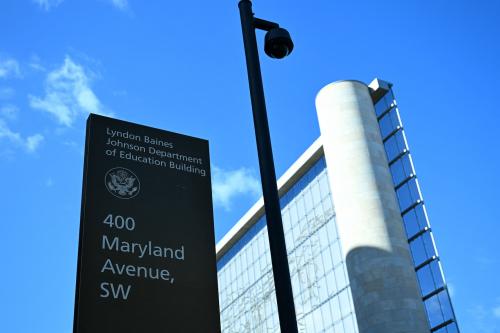This is the fourth in a series of reports on the demographic and political dynamics under way in key “battleground” states, deemed to be crucial in deciding the 2008 election. As part of the Metropolitan Policy Program’s Blueprint for American Prosperity, this series will provide an electoral component to the initiative’s analysis of, and prescriptions for, bolstering the health and vitality of America’s metropolitan areas, the engines of the U.S. economy. This report focuses on two major battleground states in the South, Virginia and Florida, which serve as bookends to an emerging New South.
Virginia and Florida have eligible voter populations that are rapidly changing. White working class voters are declining sharply while white college graduates are growing and minorities, especially Hispanics and Asians, are growing even faster. These changes are having their largest effects in these states’ major metropolitan areas, particularly Miami and rapidly-growing Orlando and Tampa in Florida’s I-4 Corridor and the suburbs of Washington, D.C. in Northern Virginia. Other large metro areas in these states are also feeling significant effects from these changes and will contribute to potentially large demographically related political shifts in the next election.
In Virginia, these trends will have their strongest impact in the fast-growing and Democratic-trending Northern Virginia area, where Democrats will seek to increase their modest margin from the 2004 election. The trends could also have big impacts in the Richmond and Virginia Beach metros, where Democrats will need to compress their 2004 deficits. Overall, the GOP will be looking to maintain their very strong support among Virginia’s declining white working class, especially in the conservative South and West region. The Democrats will be reaching out to the growing white college graduate group, critical to their prospects in Northern Virginia and statewide. The Democrats will also be relying on the increasing number of minority voters, who could help them not just in Northern Virginia, but also in the Virginia Beach metro and the Richmond and East region.
In Florida, these trends will have their strongest impacts in the fast-growing I-4 Corridor (36 percent of the statewide vote), which, while Democratic2 trending, is still the key swing region in Florida, and in the Miami metro, largest in the state and home to 27 percent of the vote. The trends could also have big impacts in the South and North, where Democrats will be looking to reduce their 2004 deficits in important metros like Jacksonville (North) and Sarasota and Cape Coral (South). Across the state, the GOP needs to prevent any erosion of support among white working class voters, especially among Democratic-trending whites with some college. They will also seek to hold the line among white college graduates, whose support levels for the GOP are high but declining over time. Finally, the support of the growing Hispanic population is critical to GOP efforts to hold the state, but this group is changing generationally and in terms of mix (more non-Cuban Hispanics), which could open the door to the Democrats.
Both of these states are near the top of the lists of most analysts’ list of battleground states for November 2008. Florida was a very closely contested state in both 2000 and 2004 (especially 2000). But Virginia’s status as a battleground is new to 2008. Yet in both states the contested political terrain reflects the dynamic demographic changes occurring within them. With 27 and 13 electoral votes, respectively, all eyes will be on Florida and Virginia on election night.
The Brookings Institution is committed to quality, independence, and impact.
We are supported by a diverse array of funders. In line with our values and policies, each Brookings publication represents the sole views of its author(s).




